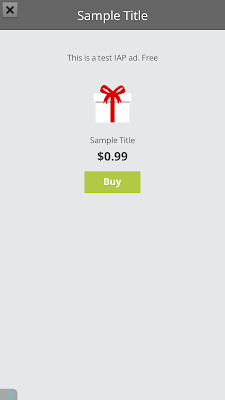This release of
AwReporting introduces new command-line arguments that can be used to import CSV files into AwReporting without using the AdWords API. So you can download reports from the AdWords user interface, even reports not available via the AdWords API like the Video Campaign Report, and import them into your database.
Offline reports The command-line arguments that allow the tool to import reports directly from downloaded files are:
- onFileReport, where you specify the Report Type (same ones used in the API).
- csvReportFile, where you specify the absolute path of the CSV file that will be imported to the database.
Here is a command-line example including the new arguments:
$ java -Xmx1G -jar aw-reporting/target/aw-reporting.jar
-startDate YYYYMMDD -endDate YYYYMMDD
-file aw-reporting/src/main/resources/aw-report-sample.properties
-onFileReport CAMPAIGN_PERFORMANCE_REPORT
-csvReportFile
Keep in mind that AwReporting will only be able to import reports that are mapped in the aw-reporting-model module. You can check out the supported types on the
project's GitHub source code page.
The CSV files must be in the same format as the ones downloaded by AwReporting via the API:
- The first line of the file must contain a string with the file description.
- The second line must contain the column headers with the field names.
- The remaining lines contain the report data.
- The last line will be ignored if it's a Total line.
Here is an example:
"ACCOUNT_PERFORMANCE_REPORT (May 1, 2015-May 10, 2015)"
Customer ID,Day,Account,Cost,Clicks,Impressions
1234,2015-05-01,Test Account,1420000,10,1978
1234,2015-05-02,Test Account,550000,4,2209
1234,2015-05-03,Test Account,1290000,6,3458
1234,2015-05-04,Test Account,320000,2,714
1234,2015-05-08,Test Account,1380000,5,2955
1234,2015-05-09,Test Account,1200000,6,2602
1234,2015-05-10,Test Account,750000,4,2793
Total, --, --,6.91,37,16709
Video Campaign Performance Reports The AdWords API doesn't support video campaign performance reports, but you can still access the web interface and download the CSV files manually.
With the new
offline import feature described above, we have added support for video campaign reports in AwReporting, allowing you to import all available fields in the web interface to the same database where the other reports are stored. We hope that this feature will make it easier to integrate systems and dashboards to the database, including video campaign performance data of clients.
To import a video campaign report CSV file, you just need to specify the report type in the
onFileReport property as
VIDEO_CAMPAIGN_REPORT, and point to the absolute path of the file in the
csvReportFile property. The properties can be found in the source code of the project, in the
ReportVideoCampaign.java entity.
Before importing the CSV files downloaded from the web interface, you will need to make sure that they are following the format described above, so AwReporting can understand it. You can find an example that we used on our unit tests in the
project's source code.
You can check out these new features and the latest released version on the
project's main GitHub page. And because AwReporting is open source, you can experiment with the code itself, by adding new types of reports as you need them.
The project's GitHub page also includes the complete installation instructions.
If you have any questions about the tool, have ideas for new features, or find any bugs, you can post them as
issues in GitHub. We maintain the tool, and the list of issues on GitHub is our first option when planning for next releases.
And of course, make sure to check out our
Google+ page for client library and Ads APIs updates.
 Gustavo M. P. Moreira, Ads API Team
Gustavo M. P. Moreira, Ads API Team


